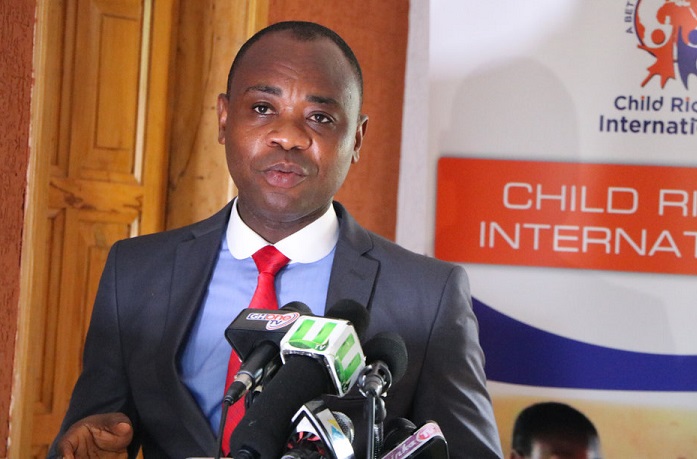
Report on free SHS shows overcrowding in schools
Almost a year into the implementation of the free senior high school (SHS) policy, a research conducted by the Ghana National Education Campaign Coalition (GNECC) has revealed overcrowding in a number of SHSs, as well as the unavailability of teaching and learning materials.
Dormitories and classrooms continue to be overcrowded, with some students sleeping on the floor in dormitories, while some female students, who could not find accommodation on school compounds and had to put up in rented places, got raped.
The study, conducted in 60 schools, including some of the grade ‘A’ schools, showed that some classrooms were packed with as many as 160 students, with inadequate teaching staff to handle the numbers.
Most schools also had inadequate toilet facilities, leading to queuing at KVIPs in the schools.
The policy research, conducted across the country between September 2017 and June 2018, was to examine class sizes and how it promoted quality teaching and learning.
Advertisement
It was also to examine the availability of teaching and learning materials, the nature and conditions for students’ accommodation, as well as the management and delivery of feeding in schools under the free SHS policy.
Accommodation
The yet-to-be-released report revealed that the level of overcrowding in some schools was unacceptable, as some students slept in the small floor spaces in between beds in dormitories.
According to the report, school authorities were compelled to receive all posted students to their schools, as they feared being sanctioned by the Ministry of Education should they complain about the lack of accommodation.
At the Presbyterian Senior High Technical School at Aburi in the Eastern Region, for instance, it said 150 students shared a 74-square metre room.
In the case of the Tamale SHS in the Northern Region, it said students in the girls’ dormitory “sleep on the bare floor with their mattresses. There were no beds available for the girls”.
In the case of the Peki Senior High Technical School in the Volta Region, a dormitory which housed 20 students in 2016 now housed 50 students.
“The same size of room (53 square metres) which housed 18 students at Achimota SHS accommodated 35 students in the Zorkor SHS in the Upper East Region,” it said.
The report also found a worrying trend of inadequate toilet facilities in the schools, although student population had increased astronomically.
It said there were fewer than average number of KVIP seats for students, causing long queues in the mornings and evenings.
For instance, in the case of the Aburi Presbyterian Senior High Technical School, it said a population of about 1,200 boys shared an eight-seater KVIP, while over 1,000 girls shared a 10-seater KVIP.
According to the report, similar issues were recorded at Twene Amanfo SHS in the Brong Ahafo Region, where 1,300 students shared a 12-seater KVIP.
Sexual assault
The key issues surrounding accommodation for day students centred around the disconnect between the permanent residence of students and the decision to place them in day status outside their resident districts.
That situation, the report indicated, had occasioned the creation of makeshift hostels in surrounding communities of schools.
Students as young as 15 years had to live on their own in such makeshift hostels which were not under the management of the schools, and that, the report said, exposed them to violence and sexual abuse.
Students of the Kumbungu SHS in the Northern Region living in the community reported about four cases of sexual assault of student girls living on their own at Kumbungu.
In addition, several cases of clashes between male students and community youth were also identified in the Zorkor SHS as well as the Moree Community Senior High Technical School in the Central Region.
Those infractions, according to the report, were the result of placing day students in schools outside their home districts, subsequently making them live without any supervision.
Read Also: Prof. Stephen Adei endorses double intake for Free SHS
Class size
The report revealed that the smallest class size was 45 and that was recorded in the Kumasi Anglican and the Juaben SHSs.
The school with the largest class size was the Apegusu SHS in the Eastern Region, where 160 students were in the General Arts class.
According to the report, large class sizes were also recorded in first-class schools such as Achimota SHS, where there were 82 students in the General Arts class.
“In addition, about 80 per cent of sampled schools had average class sizes of 60, with 10 per cent having class sizes above 60. Schools with average class sizes below 50 were schools that received less than 600 form one students, schools which either had extra classrooms prior to the free SHS, inaugurated new classroom blocks to coincide with the commencement of the policy or were able to create spaces for new classrooms as a result of the free SHS,” it said.
Teaching materials
The report indicated the issue of lack of textbooks and exercise books supplied to students.
It observed that only 20 per cent of schools sampled received the full complement of nine exercise books and four notebooks per student.
Bright side
The report was not all gloomy, as it lauded the Ministry of Education on food and textbooks.
